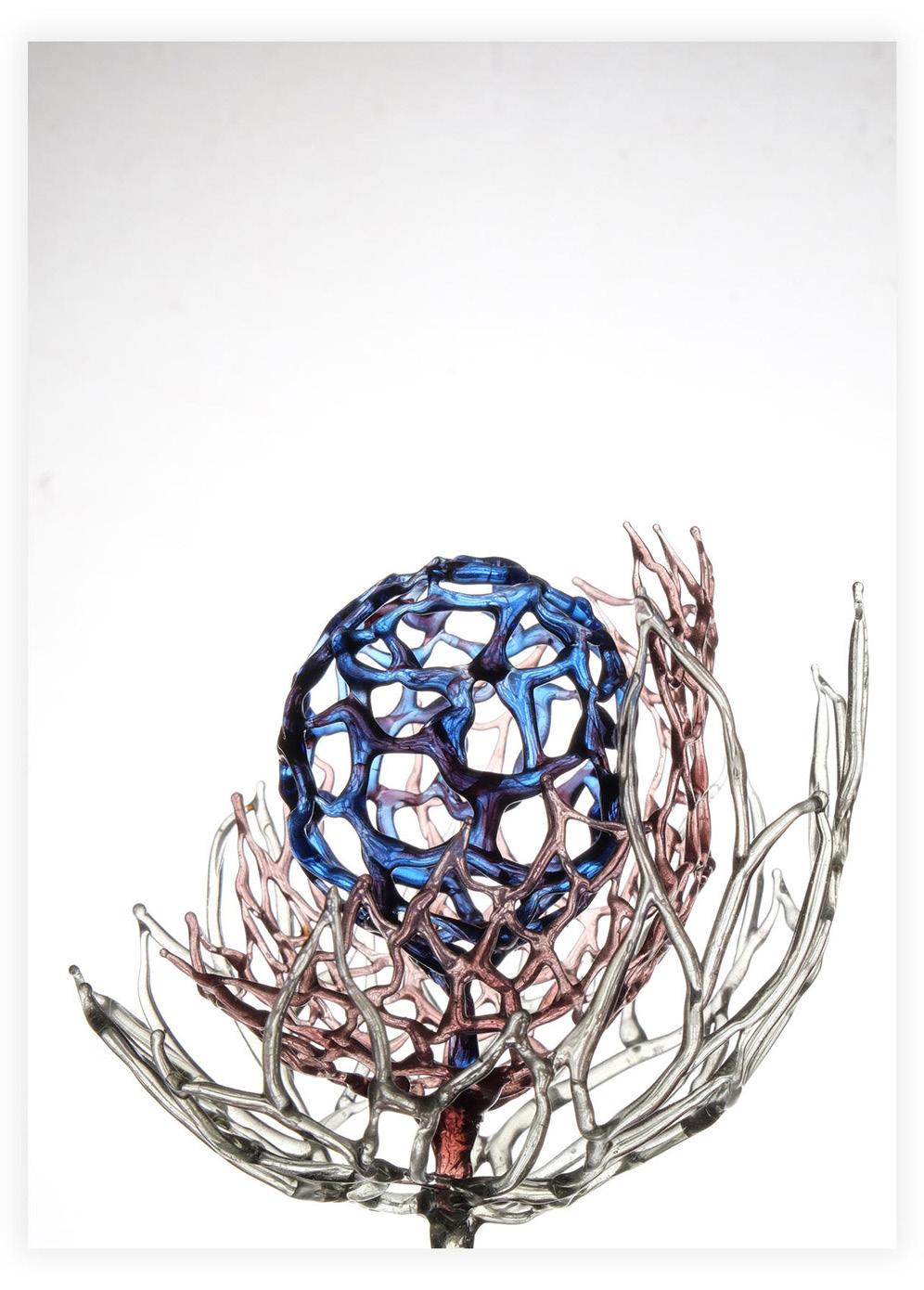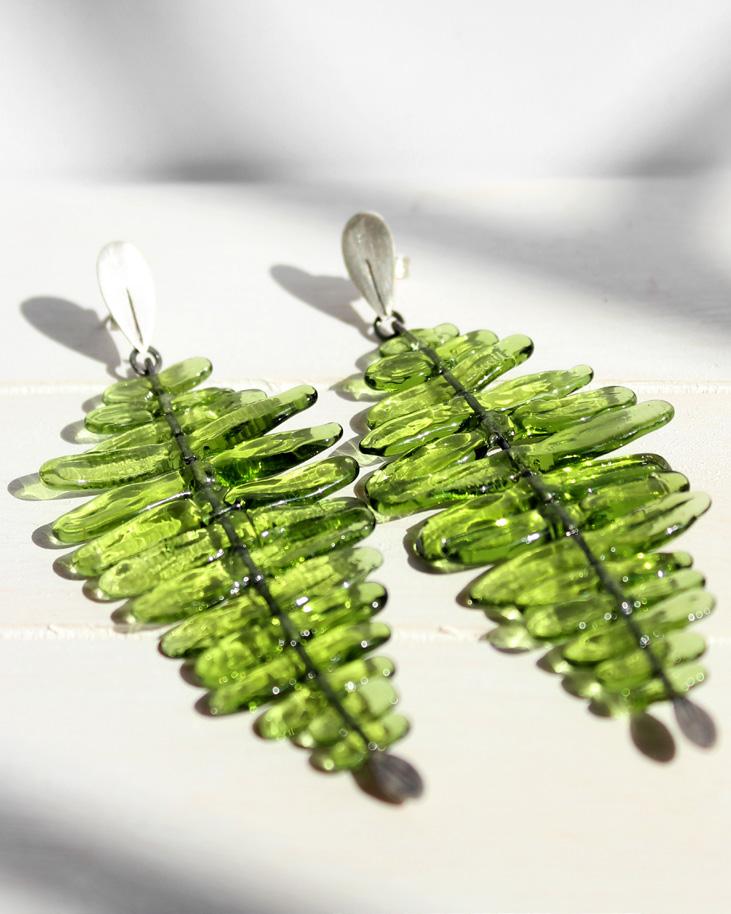
7 minute read
Metamorphosis: From Discarded Glass to Beautiful Pieces
METAMORPHOSIS: FROM DISCARDED GLASS TO BEAUTIFUL PIECES OF PORTABLE ART
by María Eugenia Diaz de Vivar
To think that the alchemy of different types of sands subjected to high temperatures results in a hard and fragile material, such as glass is extraordinary.
The first glass bottles were created by the Phoenicians for their perfumes and later, during the Roman Empire, new production methods were developed. But it was in the early 1900s that the first machine for the automation and mass production of glass containers was created to facilitate the manufacturing as we know it today.
If we talk about adaptability, it is surprising to consider the possibilities of a glass bottle, a container which was not created to make artistic pieces. The bottles from the dinner table, which for years were destined for the garbage bin, then acquired value for reuse. Today, jewelers choose them for their design pieces and generate small treasures in the form of necklaces, rings, earrings and bracelets in green tones, amber, light blue, blue or transparent.
A pair of fern-shaped earrings, a pendant with geometric cuts, a bracelet in aquamarine and green, an ethereal flower; we can find beautiful pieces in different spaces, from art galleries, museum shops, design fairs and contemporary jewelry exhibitions.
The following will introduce six contemporary artists who transform glass bottles to create incredible pieces of jewelry
The "Helechos", fern-like earrings are made by lampworking pieces of a glass bottle.
“Ferns are ancestral plants, one of the oldest on earth. They have adapted to different climatic changes and overcome the catastrophes that our planet has experienced. They are a symbol of resilience, a reminder that this pandemic will also come to an end”, says Catalan Nuria Torrente, creator of Nutopía. She owns a glass jewelry brand that reflects her vision and innovative contribution to a more sustainable world.
Inspired by the beauty of dew drops, Nuria created the “Estela” series of rings. Each of the drops is a collection of small balls made from glass bottles.
“I am fascinated by the idea of creating new work from materials that have their own history, that have had a useful life without knowing that one day they would be part of a jewel. Like an allegory of reincarnation, the metamorphosis, of a rebirth, like a phoenix, from what was considered broken and useless." Instagram: @nutopiabynuriatorrente
The “SOUL BOTTLE” collection by Beira Joyas was born in the workshop of Irene Reyes in Huelva, Spain. Irene lives with her family, in a small mountain town, which is accessed by donkey. The town is self-sustaining with electricity and the inhabitants of her community share the food they grow and harvest. Behind the jewelry pieces, there is a philosophy of ecology and a respect for life and natural cycles.
“We use bottle glass in this “SOUL BOTTLE” collection, building singular jewels, taking recycled glass to the next level. Each piece is unique, having inside the jewel a single bottle’s soul” Irene Reyes Instagram: @beira_irenereyes
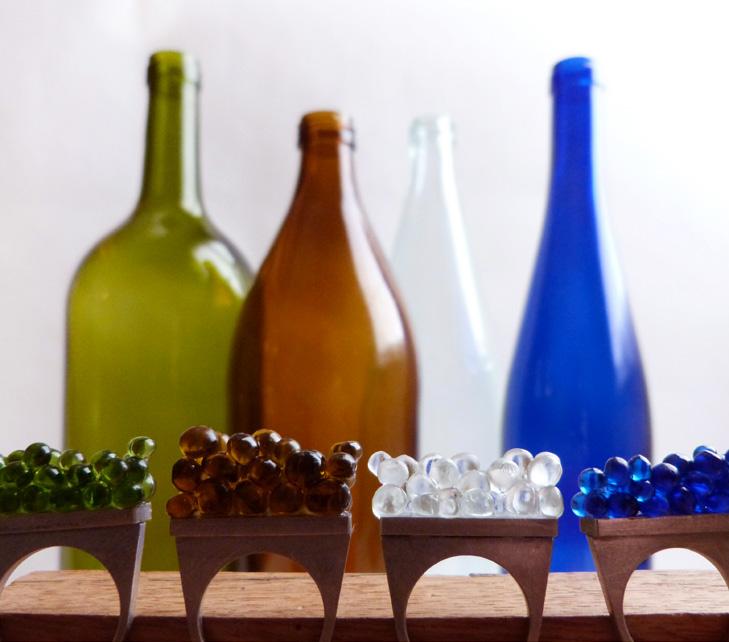
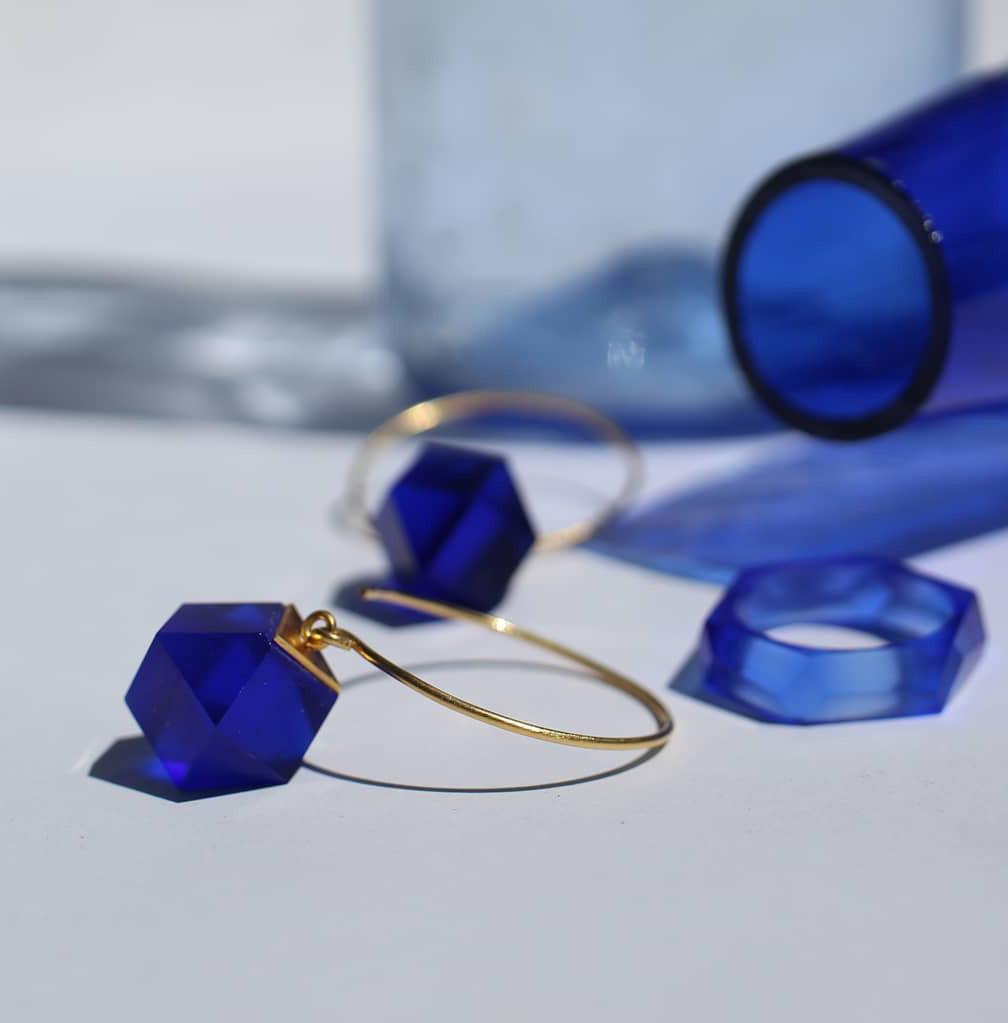

In Valencia, Spain, there is a popular festival called the "Fallas Valencianas", in which the Fallera Mayor, a young woman chosen as the beauty queen until next festival, is given a set of jewelry pieces called "Aderezo" consisting of earrings, pendants, needles, and hairpins.
In 2020, the recycled bottles from the previous fallas were used to create the "Aderezo". This was a very symbolic act, since the "Aderezo" carries a little bit of each person, as they are the ones who participate in the collection of the glass bottles. This material was used to create the unique jewelry pieces.
Sara Sorribes was in charge of transforming the bottles into authentic jewels, making them look like emeralds.
Sara, a third-generation artist working with glass, is passionate about Valencia and the Fallas. This work meant life, it was very exciting to be part of it. Instagram: @sara_sorribes
The Colombian artist and designer Luisa Restrepo, has been based in Mexico for many years, where she runs her studio. "Pico de Botella" is an upcycling project that transforms bottles of wine, tequila, or mezcal from restaurants and bars in her neighborhood into jewelry.
By design, the utility is transformed from its original function and aesthetics, moving from the table to the body. Each piece is meticulously cut and polished, achieving luxurious finishes.
“One of my final exams while doing my Design master’s degree was to create a functional musical instrument,” Restrepo recounted. “Considering that musicality is not an asset of mine, I decided to experiment with window glass and recycled bottles. For the bottles I went to restaurants and bars in the neighborhood and put together quite a diverse selection to work with. After a few weeks of cutting, polishing and gluing, to my surprise, I ended up with not one, but three very good instruments, and needless to say, lots of leftover bottles. I couldn’t just throw them away, it was too much material and I had to use them for something, so I started the jewelry collection ‘Pico de Botella’.” She continued, “I’ve been working on this collection for some years now. The first reward was the freedom to experiment without caring so much about the cost of the material. The second and most important was the involvement of the waitresses and waiters that collected the bottles for me (I usually go to the same restaurants and bars). They now know which bottles work and which don’t, and every now and again will make comments like, ‘We got this new Mezcal that would make a great pendant’ or ‘This new French wine has such a great light blue for your rings’. Like me, some of them no longer look at the empty bottles like trash, but look at them as a potential something else, which has been a very nice surprise.” Instagram: @luisarestrepomoreno
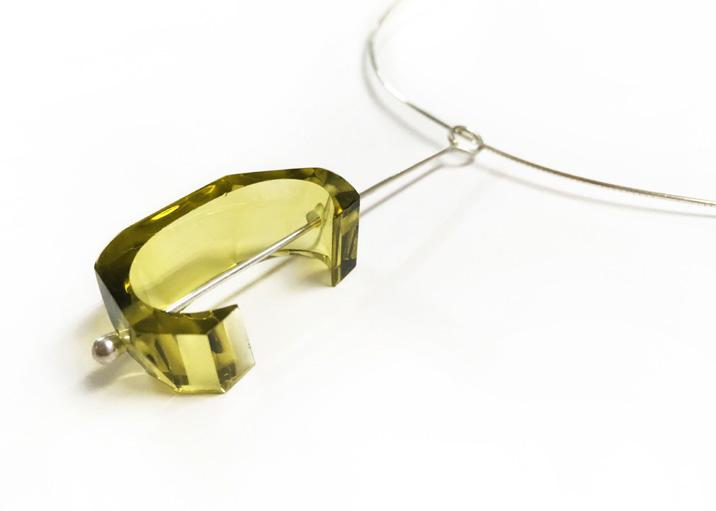
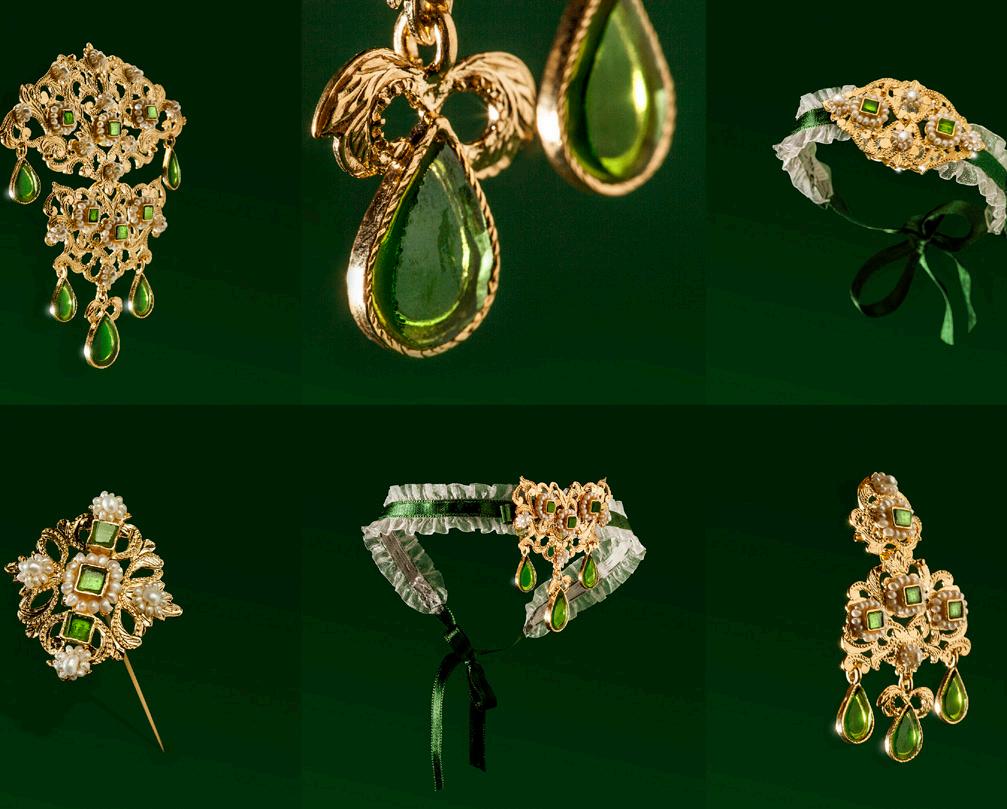
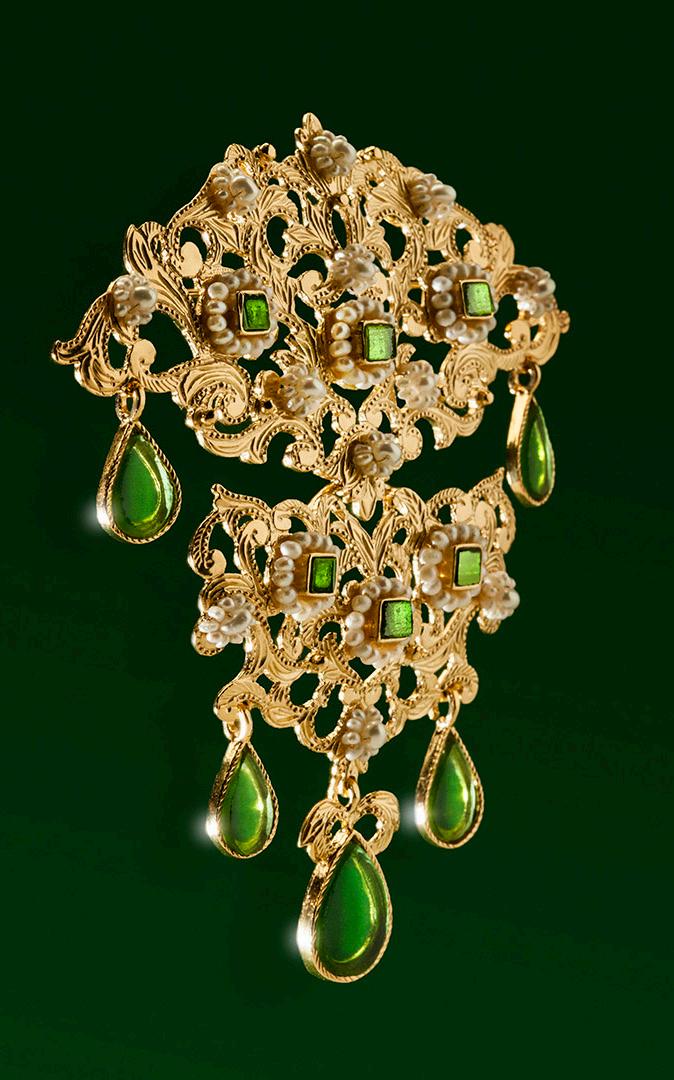
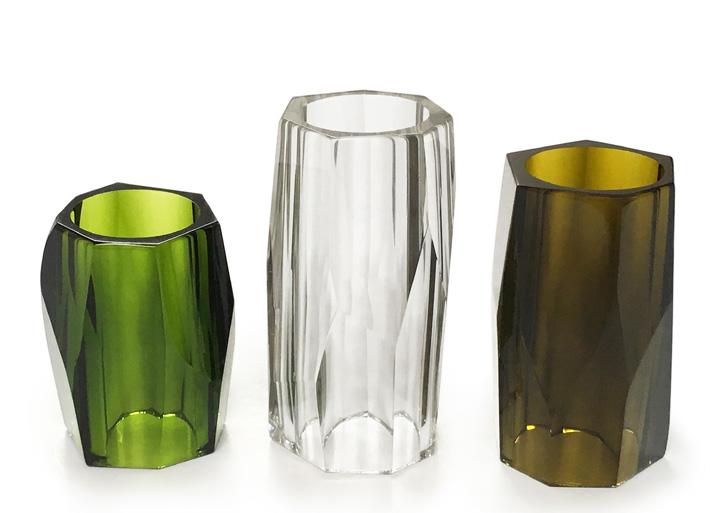
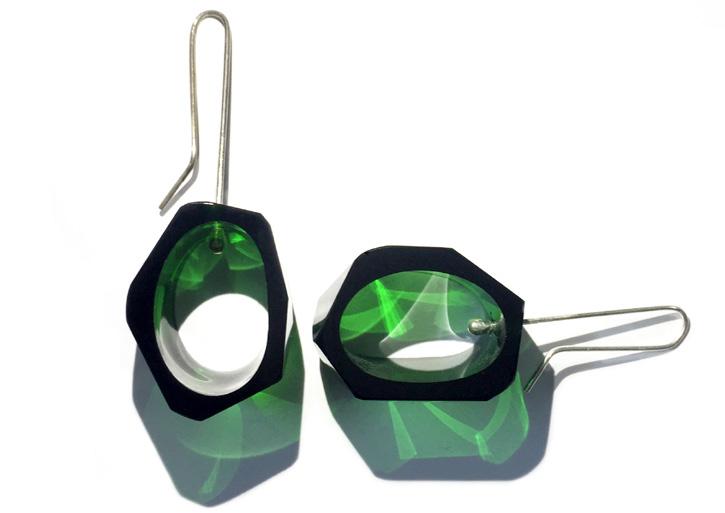
Photos of Luisa Restrepo's work



Photos of Veronika Fabian's work
Veronika Fabian is a young Hungarian artist, based in London who focused her thesis research at the Sandberg Instituut on how Covid-19 affects us as a society. The necklace named "A Long Night" is made with a wine bottle cut into slices and intertwined, made in 2021.] “I transformed objects that are often associated with shared moments, having a coffee with friends or enjoying a glass of wine in the evening,” Veronika Fabian described. “These pieces remind us of earlier times and raise the question of whether we find our way back to the old or adjust to a new norm." Instagram: @veroofabian
Indonesian artist Ivan Bestari is one of the few who works with glass in his region, and even rarer that he does so with recycled glass from bottles. His first contact with glass was through a scientific blower in 2011, who manufactured the torch with which he works. Since that time, Bestari has dedicated himself to exploring the use of the material, expanding limits and achieving beautiful miniatures in glass, with organic and sinuous shapes and combinations of colors and designs that amaze us.
Bestari is self-taught. Through YouTube videos, he learned various flameworking techniques that allow him today to create very refined pieces with an everyday and accessible material. The choice of this material has to do with the lack of access to imported glass and the high costs that he would have to obtain it.
Bestari achieved a particular style, a way of expressing himself, with a metamorphic process from waste to artwork through fire.
“I personally consider that making glass jewelry is not different from making an artwork,” Bestari explains. “Because the process of creating is basically the same with how I create my artwork, but I have to consider the wearable aspect of it. And it is related to what I describe in my artist statement: Inspired by nature and imaginative realm I created an alternative reality where my thoughts and soul are always amazed, through the metamorphic process from insignificant scrap glass into art.” Instagarm: @ivanoozz
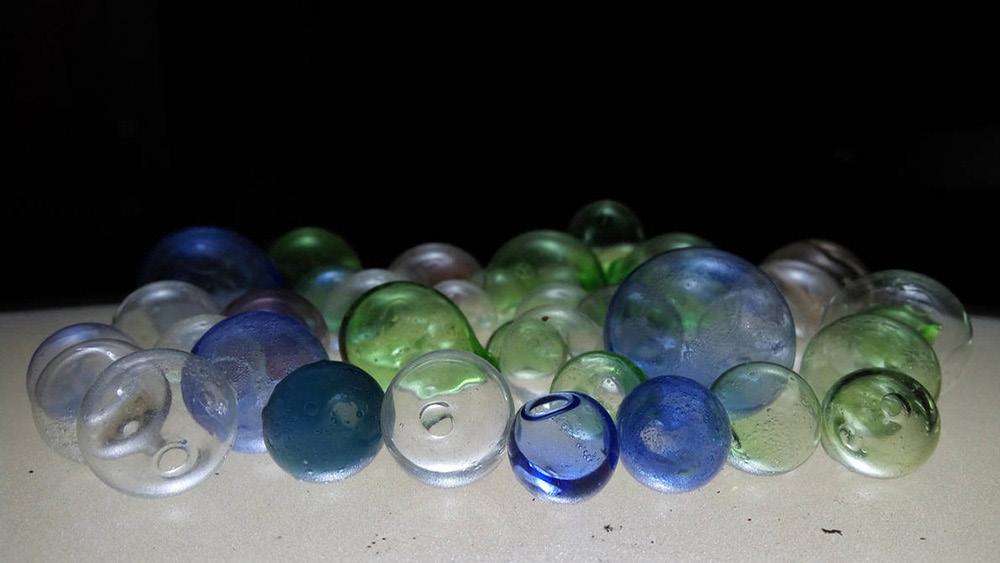
To read this article in Spanish, please click here.
